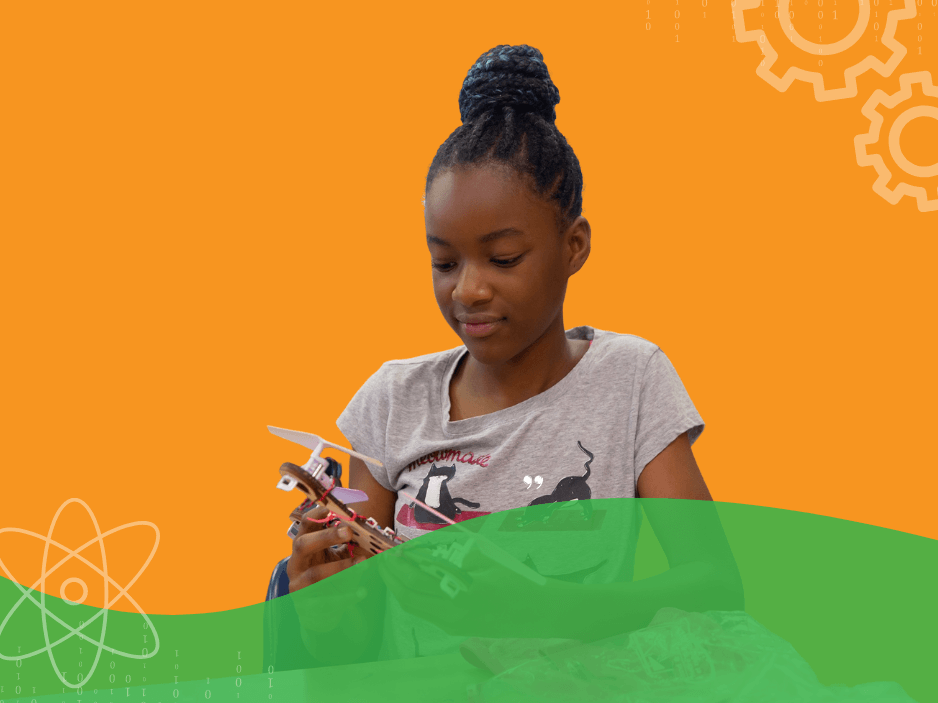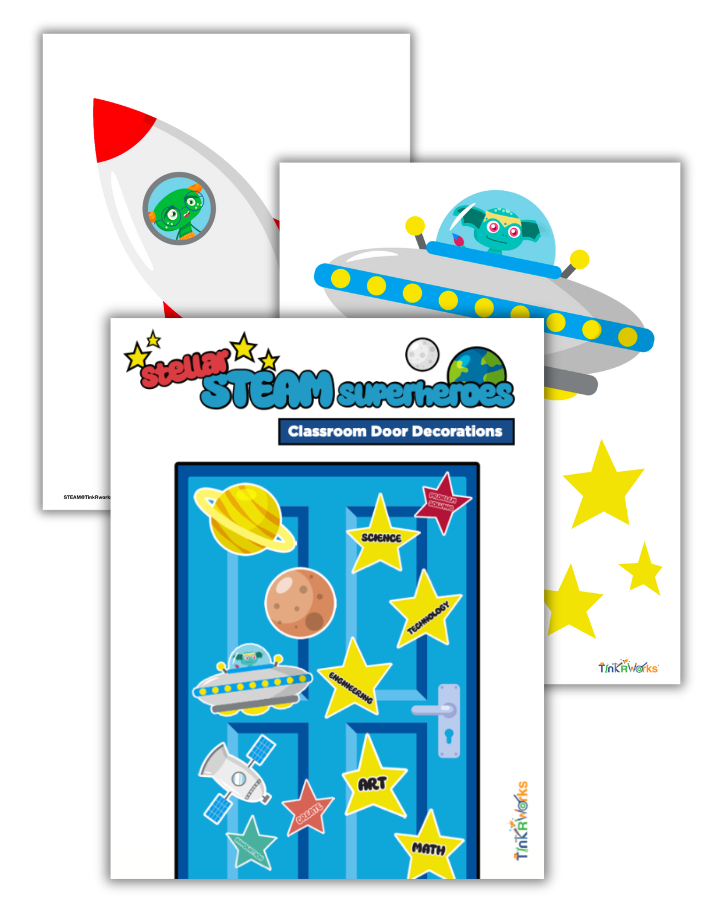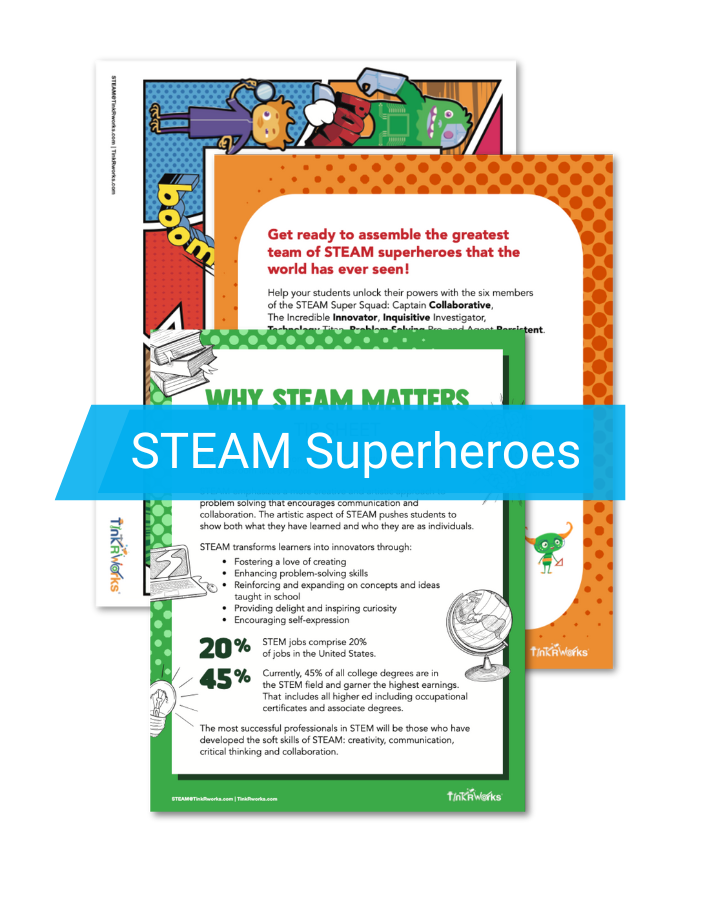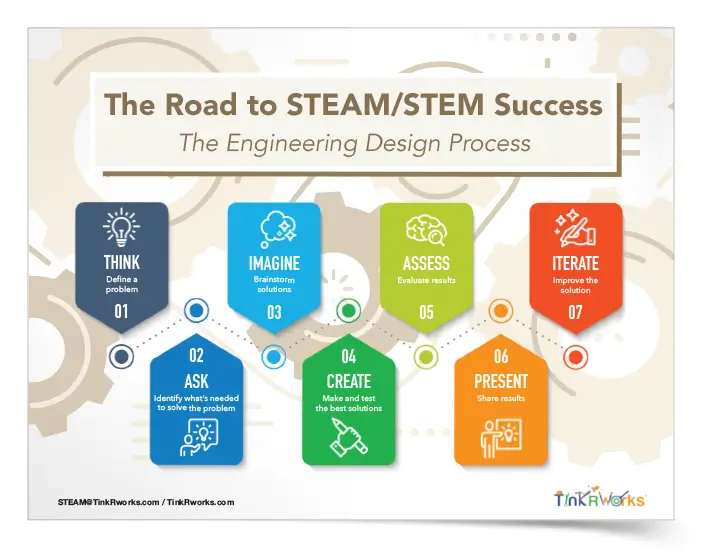You can never be too prepared for a successful school year, especially when it comes to STEAM! A highly successful STEAM program requires careful consideration and planning to ensure that your students will truly engage with the concepts. Your planning and consideration should begin with the physical environment you create for your students.
STEAM Classroom Setup in the New School Year
As the excitement for a new school year builds, it can be tempting to kick things off with a riveting back-to-school STEM challenge or project. However it’s crucial to remember the first weeks of school are when teachers and administrators lay the foundations and fundamentals for successful STEAM learning. Laying a foundation starts with setting up the STEAM classroom. Back-to-school classroom setup should be executed through a focused lens. Consider whether or not your classroom setup prepares, fosters and lays the foundation for STEM or STEAM.
In this article, we will outline a variety of ways in which you can prepare your classroom (and your students) for a fun year of STEAM learning!
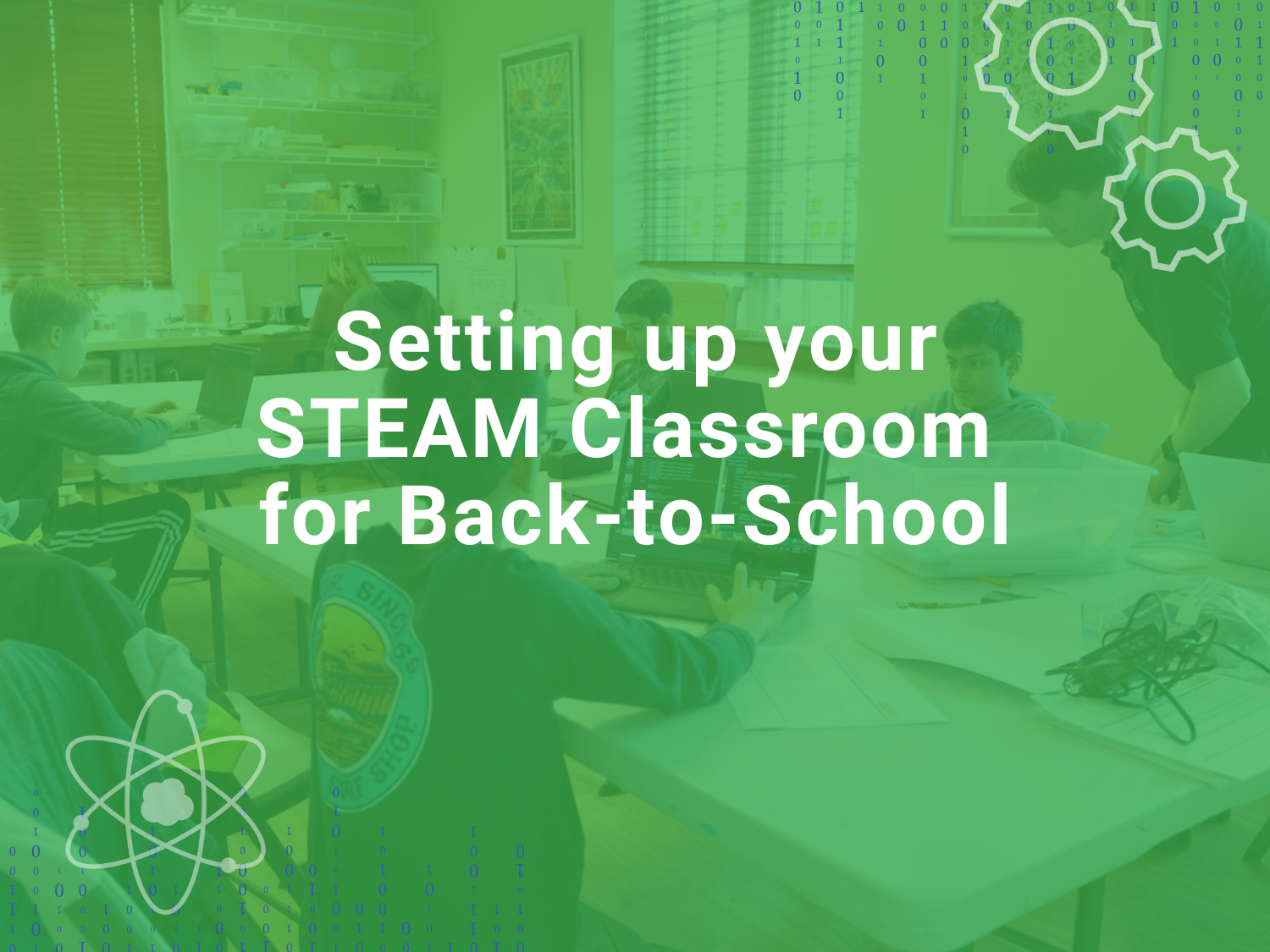
Your STEAM Classroom Setup Impacts Student Learning
The physical space in which your students learn is very important. For visual learners, colorful posters and decorations can help illustrate concepts in a clear way. Students who learn best through reading can also benefit from educational posters. Kinesthetic learners, or students who learn best with a hands-on approach, might find that interactive modules or decorations in your classroom help them engage with STEAM concepts. The respective benefits of certain items to different types of learners is important to consider when designing your classroom setup.
You should also take a mental inventory of the space you have available to you. If you are permitted to do so, you may want to plan a setup for each of the following spaces.
- Entrance (Door)
- Inner (Layout)
- Surroundings (Decorations)
STEAM Welcome Back Classroom Door Idea
The door to your classroom is the first thing that students will see upon entering. Therefore, this is your space to both introduce yourself as a teacher and to make a good first impression!
Make a big statement with a vibrant welcome back classroom door printable that will delight students and emphasize the importance of STEAM/STEAM learning. Click the button below to download the free Stellar STEAM Superheroes Classroom Door Decorations now!
5 Elements of Effective STEAM Classroom Design
An efficient STEAM curriculum typically involves lots of hands-on learning activities. In order for those to be productive, a classroom should be organized in a way that helps optimize the space. Elements of a high performing STEAM classroom include the following.
#1 Adaptable Classroom Layout
STEAM classrooms should facilitate active, Project-based Learning. Creating an environment that is easily changeable to meet the needs of various STEAM projects involving different group sizes. The more fluid your learning space, the better. By shuffling desks, tables, and chairs, you can promote collaboration between students within groups. Creating a dedicated space for building and working in groups can aid in productive teamwork and group learning, something that is engaging and beneficial to students.
#2 Makerspace
A makerspace is a dedicated space in which students can test and practice STEAM concepts in the real world. Craft/office supplies, recycled materials, and objects collected from nature are all gathered into a makerspace to allow students the chance to build and experiment as they learn.
Makerspaces are important when teaching students the real-world applications of the concepts they learn in the classroom. By allowing students to take an active approach to STEAM, you can increase their understanding as well as their excitement for learning.
Your makerspace can be in a classroom corner, or a dedicated room of its own. If you have space for the supplies, some tables, and a few students, you have enough room to add a makerspace!
If you need help creating a makerspace, or you need ideas for items to include in one, browse our resources. Also, check out our free makerspace library, TinkRpedia! The TinkRpedia Makerspace Lesson Library is a free collection of hands-on projects for students K-8.
#3 Flexible Furnishings
An adaptable classroom promotes mobility. Tables, desks, chairs, whiteboards should be easily moveable to configure a space that promotes collaboration. Filling a classroom with furniture that is lightweight, stackable, foldable, and/or on wheels allows for quick transitions between STEAM projects.
A large, open central space is also helpful when creating a flexible environment. Avoid over-filling your classroom with filing cabinets, bookcases, or any non-essential furniture. Maximizing the space you have makes it easier to do a variety of different hands-on STEAM projects within your classroom.
Of course, good organization can minimize the need for lots of storage space. Try to clear your room of items that do not directly contribute to your work or your students’ learning. This will also keep your space clean in the face of fun projects that may be messy!
#4 Technology
Regardless how tech-savvy you consider yourself to be, technology is your ally in creating a good STEAM learning environment. Making technology available to students can help keep them engaged while preparing them for a 21st Century workforce.
The back-to-school STEAM classroom should have:
- Stable internet connection (the more technology your classroom has, the more important reliable networks will be!)
- Plentiful electrical outlets
- Retractable power reels
- TVs/Displays
- 3D Printers
- Computers or Tablets
#5 Sustainability
Finally, a successful STEAM classroom should be an organized learning space that is good for students, educators, and the environment. Incorporating sustainable measures into your classroom layout is simple! Check out the suggestions below.
- Utilize natural lighting to reduce energy usage
- Use recycled or recyclable materials in projects
- Stick to classroom decor that can be used year-to-year (or donate it to another educator when you are finished)
- Embrace computers/devices to eliminate paper use
- Use group projects (rather than individual projects) to limit the amount of physical materials needed for a lesson
Some sustainability methods will work better than others based on the layout of your building and your specific environmental factors. See what ideas other teachers in your area have to create a more sustainable classroom.
Surround Students with STEAM
Regardless of grade level, ALL students like a dynamic and visually interesting classroom. Here are some free STEAM printables that will educate, inspire, and encourage students!
STEAM Superheroes Posters
Teach your students the necessary skills that a STEAM Superhero possesses! Hang these posters in your classroom to showcase concepts like analytical thinking, productive struggle, teamwork, and innovation with the help of the Super STEAM Squad.
Design Engineering Process Visual
STEAM concepts go hand-in-hand with the Engineering Design Process (EDP), a pedagogical framework for solving tough questions. With the help of instructors, students can make significant STEAM learning gains by becoming familiar with the EDP process. As they develop their skills within the EDP framework, they will learn to approach problems as a problem-solver rather than simply as a listener.
Download our free The Road to STEAM Success: The Engineering Design Process Poster & Handout and hang it in your classroom so it’s easy to reference the entire school year.
In Conclusion
Starting the next school year on the right foot is easy with a little planning and preparation! Get students excited about STEAM on their first day, it will set a tone for productive learning for the whole year. Make your classroom setup a priority, and your students will be STEAM Superheroes before you know it!

